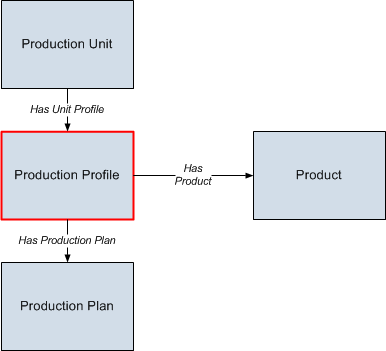In terms of the Production Loss Analysis data model, one Production Unit will be linked to one or more Production Profiles, as shown in the following image. Each Production Profile is linked to a single Product representing the product that the production unit produces. In addition, each Production Profile is linked to one or more Production Plans representing the planned production for that production unit and product combination. The image shows these relationships. The arrows represent relationship families, and the boxes represent entity families. The Production Profile family is outlined in red.


